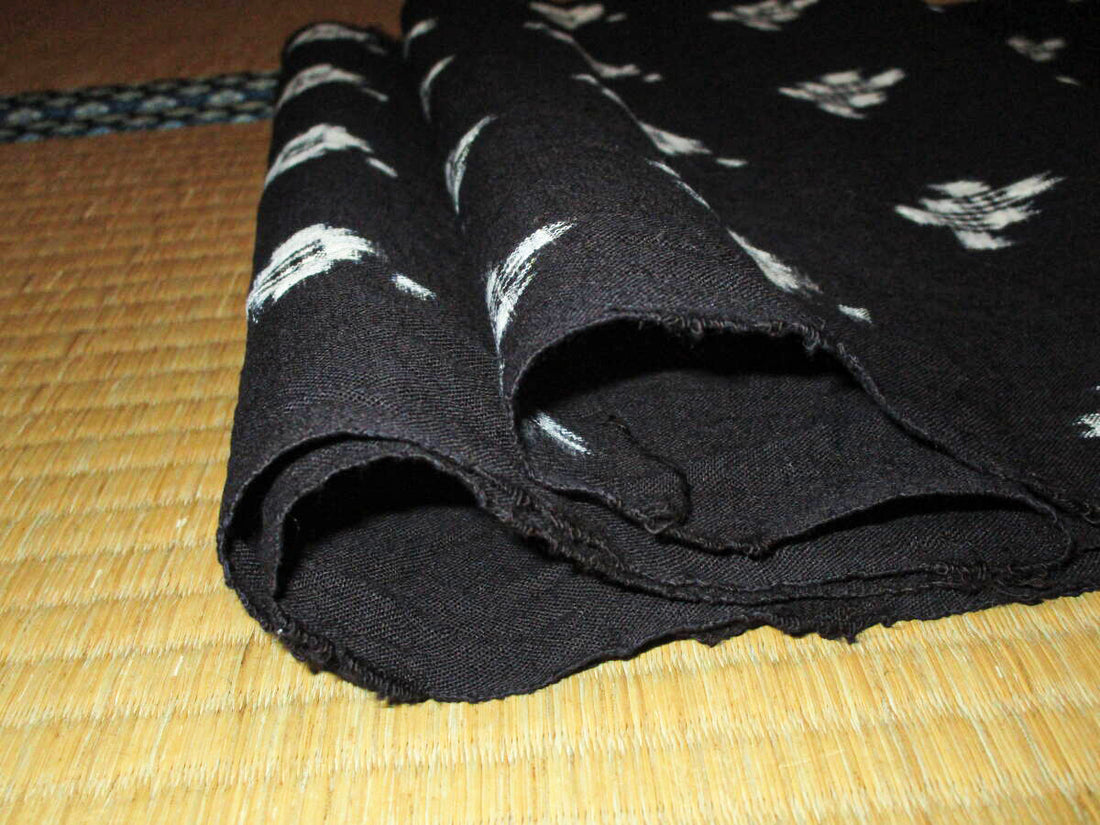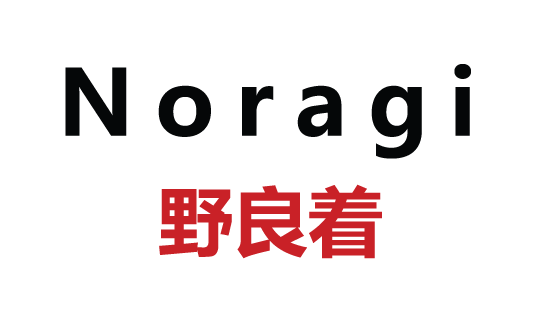
Kasuri Process
Share
Origins and Development
Kasuri likely originated in Southeast Asia and was introduced to Japan through trade routes. It became particularly popular during the Edo period (1603-1868) and flourished in regions such as Kurume (Kyushu), Iyo (Shikoku), and Bingo (Chugoku).
Types of Kasuri
There are several types of kasuri, differentiated by how the patterns are created:
- Ikat: The general technique of pre-dyeing threads before weaving. Both warp (vertical threads) and weft (horizontal threads) can be dyed.
- Tate-kasuri (Warp Ikat): Only the warp threads are dyed to create patterns.
- Yoko-kasuri (Weft Ikat): Only the weft threads are dyed.
- Tate-yoko-kasuri (Double Ikat): Both warp and weft threads are dyed, resulting in more complex and intricate patterns.
- E-gasuri: A pictorial form of kasuri, where motifs such as flowers, birds, and landscapes are depicted.
The Kasuri Process
Designing the Pattern: The first step is designing the pattern. This involves planning the precise arrangement of the dyed threads to create the desired motifs.
Binding the Threads: Threads are tightly wrapped or bound with a resist material (such as waxed thread or bamboo strips) at predetermined intervals. These bound sections resist dye penetration, creating the pattern.
Dyeing the Threads: The bound threads are then dyed, usually in an indigo vat. The exposed areas absorb the dye while the bound areas remain undyed.
Removing the Bindings: After dyeing, the bindings are removed, revealing the undyed sections that form part of the pattern.
Weaving: The dyed threads are woven into fabric. Aligning the pre-dyed threads correctly during weaving is a meticulous process that requires great skill. This alignment creates the characteristic kasuri patterns with blurred edges.
Characteristics of Kasuri
Blurry Patterns: The signature look of kasuri is its blurry or feathered patterns, which occur due to slight misalignments in the dyed threads.
Complex Designs: Double ikat (tate-yoko-kasuri) can produce highly intricate and detailed designs, including pictorial representations.
Handcrafted Quality: Traditional kasuri is handcrafted, reflecting the artisan's skill and creativity.
Cultural and Modern Significance
Kasuri was historically used for everyday garments, including kimonos, as well as household items such as futons and obi sashes. Its durability and aesthetic appeal made it a staple in Japanese textile arts.
In modern times, kasuri remains a valued and respected craft. There is a growing appreciation for its traditional methods and sustainable practices. Contemporary designers and artisans continue to explore and reinterpret kasuri, blending it with modern fashion and interior design.
Regional Variations
Different regions in Japan have their own variations and specializations in kasuri:
Kurume Kasuri: Originating from Fukuoka Prefecture, known for its distinctive geometric patterns.
Iyo Kasuri: From Ehime Prefecture, famous for its bright and colorful designs.
Bingo Kasuri: From Hiroshima Prefecture, noted for its subtle and elegant patterns.
Preservation Efforts
Efforts are being made to preserve and promote kasuri weaving. Many regions have established cooperative associations and museums to keep the tradition alive. Workshops and educational programs are also offered to pass down the knowledge and skills to new generations.
In summary, kasuri is a highly intricate and revered textile technique in Japan, characterized by its unique process of pre-dyeing threads to create patterns during weaving. Its historical significance, regional variations, and modern adaptations reflect Japan's rich textile heritage and the enduring appeal of kasuri fabrics.
